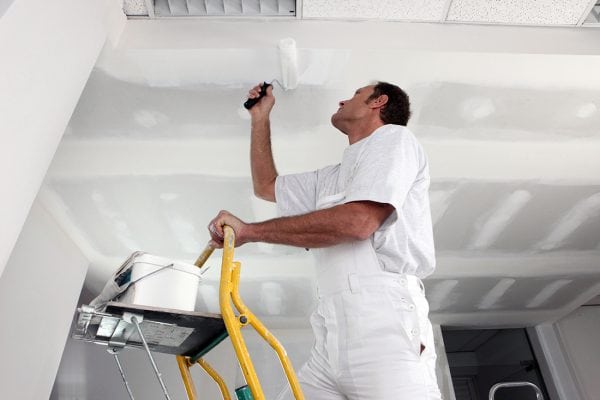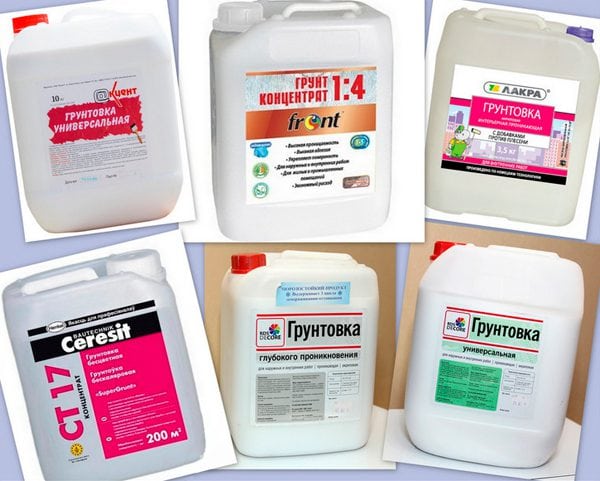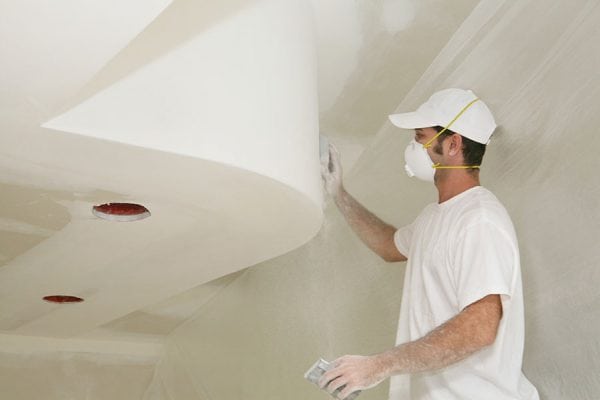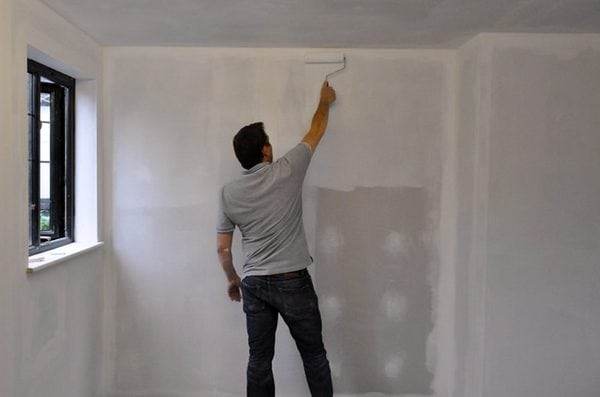Surface preparation consists not only in its filling and cleaning from irregularities. Proper preparation of drywall sheets also involves applying one or more primer layers. The drywall primer is a special composition that can significantly improve the quality of the base, as well as extend its life and reduce the consumption of finishing materials.
Varieties of primer
First of all, you need to choose the right primer mixture. The time taken to work, the drying time of the surface, the number of layers required, and the effectiveness of the primer as a whole depend on the correct choice. At least one drywall primer is required before puttying.
Different types of primers are available on the market. Moreover, not all of them are applicable to GCR.
Existing options for primers:
- Based on acrylic. Acrylic universal mix well adheres to almost any surface. The mixture dries within 2-4 hours. Acrylic is best for GKL. It is recommended to apply the mixture both before putty and after it.
- Phenolic mixtures are used for priming metal and wood surfaces. Such mixtures must not be applied to the putty layer. However, phenol is well suited for the first priming of drywall. You should pay attention in the store whether a particular mixture is suitable for indoor use.
- Alkyd mixtures are used only for wood substrates. It is categorically not recommended to put them on putty.
- Perchlorovinyl mixtures are suitable for the treatment of bricks, putties, and cement. But you can use perchlorovinyl only for exterior decoration.
- Gliphthal mixtures are the most powerful, but they should only be used in well-ventilated rooms or for outdoor use.
- Polyvinyl acetate mixtures are used only in conjunction with polyvinyl acetate paints.
- Polystyrene mixtures process wooden and plastered surfaces. Exterior polystyrene is used only.
When choosing a primer, you need to consider not only the base, but also the finishing material. For example, if it is planned to glue light wallpaper or stain, then a simple soil mixture without deep penetration is enough. However, when it comes to heavy wallpaper, a deep penetration primer is needed. This will make it possible to tighten the adhesive composition and make the base more durable. As a result, heavy wallpaper more firmly adheres to the wall.Thus, the best option for priming GCR is an acrylic mixture.
Advantages of acrylic primers:
- universality, applicability in relation to most finishing materials;
- economy in spending;
- high degree of penetration into the material;
- high adhesive qualities;
- good pore occupancy, as a result of which the surface is painted as evenly as possible;
- reducing the consumption of glue, varnish or paint after priming with an acrylic composition;
- breathability.
Why do I need to prime drywall?
Do I need to prime drywall? The answer to this question is positive, since the primer gives the processed material additional qualities, namely:
- strengthens the surface;
- improves the adhesive properties of the surface (i.e. the ability to adhere to other materials);
- prevents mold and mildew.
Also, impregnation reduces the need for the consumption of finishing materials (paint or varnish) and increases the service life of the treated surface. In addition, it will be easier to remove the wallpaper from the primed wall if it is necessary to dismantle it.
Do I need to prime drywall before applying putty? Experts recommend applying the soil both before putty and after it (the second layer acts as a strengthening).
Priming is carried out with a conventional roller. Layers must be thin, and they must be distributed evenly. Any further operations with drywall are possible only after the primer dries. Drying time depends on the type of composition, as well as on the type of wallpaper to be glued.
to contents ↑Drywall Primer
Before priming drywall, the sheets need to be installed and fixed on the frame. To putty put on GKL with a qualitative even layer, the surface needs to be primed.
For priming, you need to prepare such materials and tools:
- acrylic primer mixture - its total consumption depends on the area of plasterboard being processed (approximate information on the consumption is indicated on the package);
- brush or roller for surface treatment;
- a tray for a primer (special plastic containers for priming mixtures are produced).
As mentioned above, it is more than desirable to prime drywall before puttying. It is best to use a roller - so the applied layer will be smoother. However, in hard to reach places we use a brush.
Sequencing:
- To start, we dilute the mixture in water. Pour the prepared composition into the container.
- Dip the roller in the solution and begin to apply the first layer. It should be as even as possible. We process the entire area of the drywall sheet.
- Let the surface dry.
- We begin to putty only after the final drying of the first layer.
- After the surface is primed, we put the putty on the GVL, but first we glue the joints of the panels with a sickle.
- After the putty dries, we process the surface with sandpaper and clean the panels of dust.
- The final stage is the application of a second (strengthening) primer layer.
So, this article should remove the question of whether it is necessary to prime drywall before puttying. GKL priming is highly recommended if the purpose of the repair is to obtain a high-quality surface that, together with the finishing materials, will last for many years.








